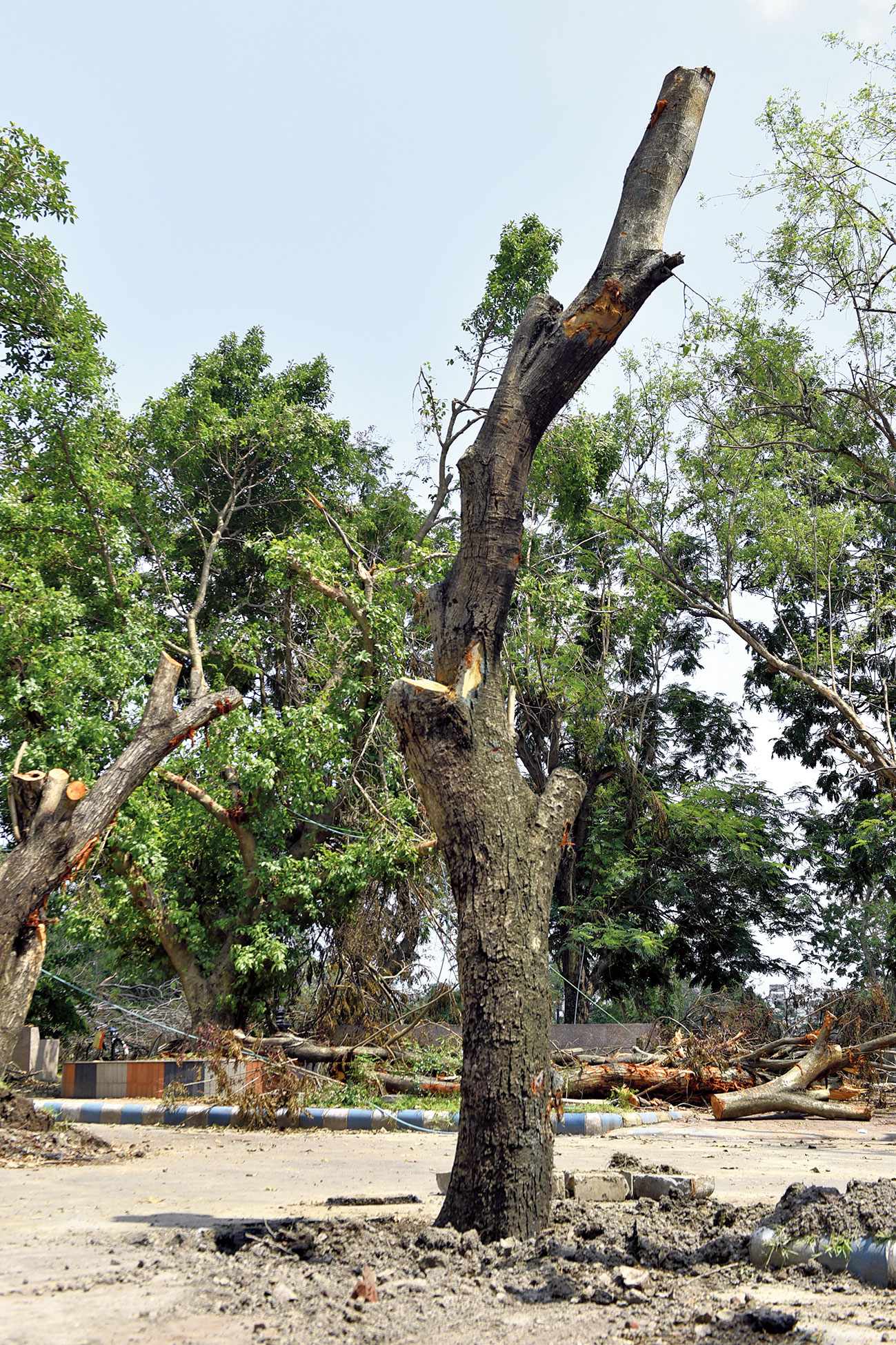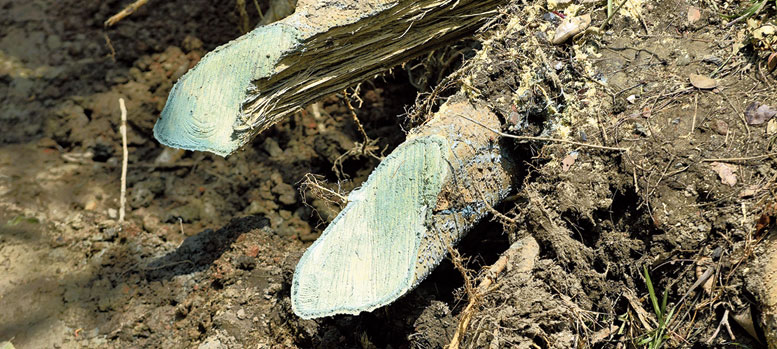As many as 100 trees that were uprooted on the Rabindra Sarobar premises when Cyclone Amphan was blowing through the city on May 20 could be restored, urban development minister Firhad Hakim said on Friday.
Hakim inspected the lake premises on Friday, along with officials and engineers of the Calcutta Metropolitan Development Authority (CMDA), the custodian of the park.
The CMDA has done an initial assessment of the trees that had inclined or been uprooted by the cyclone. Naturalists, botanists and environmentalists have been engaged for restoration. They will conduct more inspections to finalise the list of the trees that can be restored.
A CMDA official said about 150 trees fell on the 192-acre campus, 119 acres of which are land and the rest water. “A hundred of them could be restored,” Hakim said.
Arjan Basu Roy, a naturalist who is involved in restoration of trees at Rabindra Sarobar, said the headload — branches and leaves towards the top — of trees would have to be chopped off for restoration.

A tree that was damaged in the storm after being restored
“Besides, the wounded and torn roots have to be treated with anti-fungal chemicals. The soil around the roots have to be cleaned of all impurities like concrete chunks. It is then that the trees will be pulled up with cranes and restored,” he said.
“It would take about 10 days to complete work. But because of unforeseen circumstances, it seems the restoration work may take some more time.”
The trees that were uprooted with a considerable amount of soil attached to the roots and have remained so for the last 10 days are easier to restore, said a botanist.
“These trees are drawing nutrition from the soil still attached to the roots. If we pull them up and take care of them, many of the trees will survive. Also, trees that are between 15ft and 25ft tall and has a standard girth are easier to restore...,” said O.N. Maurya, the deputy director of the Botanical Survey of India, who is among the specialists engaged in restoration work at Rabindra Sarobar.

Roots of a plant after being treated with a chemical that will help them survive.
Maurya said restoration of indigenous plants would be easier as they have been exposed to the local soil conditions for ages. “The focus should also be on restoration of exotic trees that are fewer in number,” he said.
A naturalist said restoration meant that trees would be pulled up and restored to their pre-Amphan position. This is different from transplantation, which involves transporting a tree to a new location.
A CMDA official said Hakim, who is also chairman of the Calcutta Municipal Corporation’s board of administrators, asked the team involved in restoration to find out whether some of the toppled trees along Southern Avenue or inside boulevards could be made to stand again.
The CMDA is also assessing the condition of 43 trees that were toppled inside Subhas Sarobar — in Beleghata, off EM Bypass — to find out how many can be restored. Hakim will visit Subhas Sarobar — spread across 100 acres — on Monday.
“These are two green islands in our city. The large number of trees is what makes them so special. We cannot afford to lose this green cover,” the CMDA official said.










